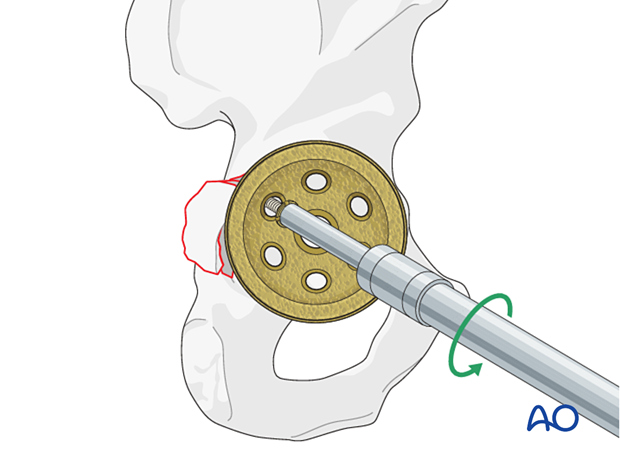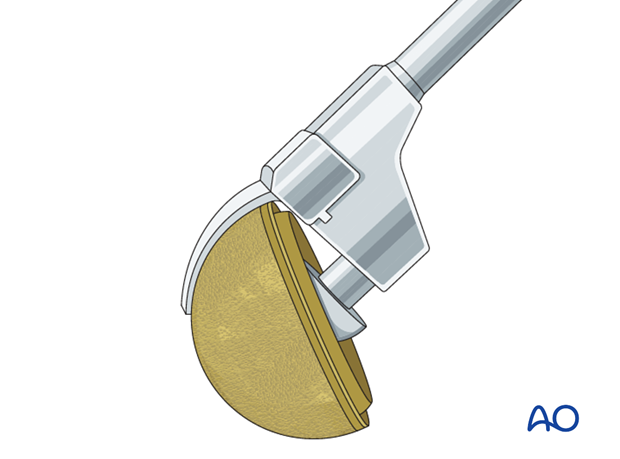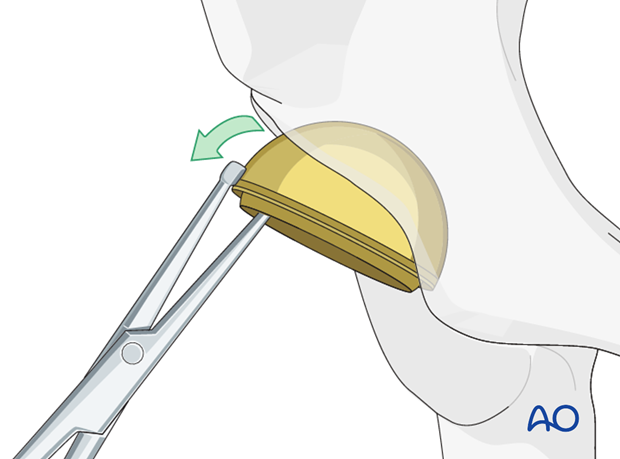Acetabular cup removal
1. Cup screw removal
The surgeon must ensure that all the cup screws were removed prior to attempting to remove the cup itself.

If acetabular component is secured with screws, remove the polyethylene portion to expose the screws.
There are two commonly used techniques for bearing removal:
- Use of an osteotome at the liner-shell junction to lever and to remove the liner

- Use a threaded extraction tool or cancellous screw to push out the liner
In the event neither technique is successful, the liner should be sectioned with a high-speed burr in order to access the screws. Forceful extraction of the cup with the screws in place will result in major disruption of the acetabulum and substantial neurovascular injury.

Remove the screws and the cup with available equipment.

In the rare case in which the screw head is stripped, or broken, the surgeon can consider using a high-speed burr to loosen or to remove the screw head in order to remove the cup.

2. Option 1: hand-held tools for cup removal
Cup removal can be performed using hand-held tools.

Choose the osteotome that most closely matches the outer diameter of the cup.

3. Option 2: acetabular osteotome system for cup removal
Another well validated technique for cup removal is using an acetabular osteotome system.

To free the peripheral bone-cup interface, start with the shorter blade that most closely matches the outer diameter of the cup.

Longer blade(s) is used to free up the bone-cup interface closer to the dome.

Remove the cup once it is loose.














